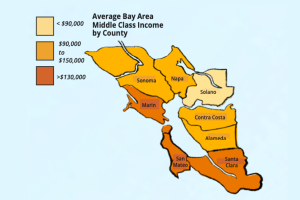Editorial: Teachers should incorporate current events into curriculum
Graphic Illustration by Mei Corricello and Anirudh Seshadri
Lynbrook teachers should create curriculum for current events across departments.
March 17, 2021
Bushfires in Australia rage on. Iranian general Qasem Soleimani killed in a drone strike by the U.S. World Health Organization declares COVID-19 a public health emergency. George Floyd’s death sparks protests across the nation. Biden wins 2020 Election Results. The news can be overwhelming for anyone to follow, especially a young student growing up in a world of chaos. As our generation prepares to join the workforce and the voting population, we must stay informed about what is happening around us. While Lynbrook’s history curricula cover our country’s past, they should also have a greater emphasis on the present and the future. To prepare students for life outside of high school, the standard curriculum should include continual discussions about current events and global issues.
World and U.S. History classes typically teach major conflicts, events and developments that have shaped today’s political, economic and social landscapes. Many teachers assign video lectures, documentaries and reading comprehension questions so that students can learn to understand and analyze the information. Learning history is a way for students to better understand how the world has changed over time and what influenced those transitions. However, learning about recent events is even more fundamental to building that understanding, as we are living through events that will eventually become history as well. In comparison to a traditional curriculum that focuses on history, current events can help students better understand the history-based curriculum and lead to a more well-rounded education.
“I love talking about current events with people,” junior Melissa McCollough said. “I also think connecting current events with historical events helped me understand what it was like for people going through those events and better form an opinion on the situations.”
Though Government and Economics courses cover more contemporary issues, those classes are only available to seniors. Students should be well-educated about current events long before their senior year — as early as possible
It is important for all high school students to learn about current events to increase awareness about global issues, teach media literacy skills and create open classroom environments for meaningful conversations. Students who are more informed about national and international issues can form well-researched opinions, and be active, empathetic citizens.
However, teaching current events is not only about providing lessons and information but also about giving students the resources and space to discuss topics with others. Discussion of these complex subjects will help them form their own opinions.
It is important to acknowledge the immense efforts that some history teachers are already putting in to make their classes more engaging and relevant by facilitating discussion in small groups though open-ended or controversial questions with a lens on historic events. But teachers should also make these questions relevant to the status quo by asking students to connect them to current issues.
Many teachers do currently implement project-based learning, in which students do their own research and present information on a historical topic. In a similar manner, teachers should incorporate current events by connecting historical topics that students are learning about to relevant issues in the present. The students could then share what they have learned and the similarities and differences between the past and the current topics.
For instance, in her World History class, teacher Esther Phan assigns a final project at the end of each semester for students to make an in-depth presentation of a timely world issue. In the 2019-20 school year she asked students to look at climate change and global warming. Different groups picked subtopics such as food waste, deforestation and transportation. The projects helped students better understand climate change and be prepared to tackle the problem, which is a pressing issue for our generation.
“Everyone says it, but Gen Z is the future,” McCollough said. “We’re going to be in charge one day. It’s important to get a head start by learning about politics and finding issues we’re passionate about.”
World History teacher Luca Signore also uses project-based learning to incorporate current events in his classes. For example, he assigned students a group project to research a historical topic, such as the Black Death and compare it with a contemporary topic like the COVID-19 pandemic. Using these types of comparisons, Signore helps students better understand the impact of historical events as they can now relate to what that particular historical event might have felt like.
Other classes, such as Homeroom, should also include discussion on current events. This year in Homeroom, students had the chance to watch the U.S. presidential inauguration. However, students were not given a chance to discuss it with their peers. Current events such as these should be shown in a manner that is more engaging and should have questions to promote discussion between students. As it takes time to come up with lesson plans based on current events, discussions can be casual, with questions simply asking for student thoughts and reactions.
Additionally, if teachers teach current events through newspapers and digital media, staying up to date on the news will become a habit for students. Practicing reading articles and consuming media teaches students to find reliable sources, understand bias and absorb information in healthy and balanced ways. For example, French teacher Denise Schang asked her students to research French news almost weekly to keep them informed about events in French speaking countries. In the next class, she made breakout rooms for students to talk about the news they researched, and to share their opinions on each other’s events.
“You cannot be a critical thinker if you are just using the facts that you know,” Schang said. “You need more facts and different perspectives to form a better-supported opinion. Speaking a language isn’t just about communicating; it is also to understand the culture, and that people from different countries have different perspectives.”
At the same time, teachers may not have enough time to cover both recent news and the curriculum, because classes like APUSH are fast-paced with most of the curriculum dictated by the AP exam preparation. Teachers may also be hesitant to introduce these events in class because they worry that students will be overwhelmed by the news or that controversial ideas will cause conflict. Still, teachers could stay neutral by keeping their own opinions private while facilitating healthy discourse between their students.
“I find [keeping my politics private] works for me,” AP Government and Economics teacher Jeffrey Bale said. “I feel it gives me a higher legitimacy as a teacher. If I were to go out there and set out some things, everything would be watered down because people would naturally question that [what I said] was just a part of my agenda.”
However, it is important for teachers to push students out of their comfort zones in some situations and highlight different ideas. Especially in a school environment where most students share similar socioeconomic backgrounds, students can forget to consider other perspectives. In Bale’s class, for example, he assigns political candidates to students, and even if the students do not agree with their policies he asks them to argue their perspective. The activity can help students humanize politicians and find validity in their stances. In today’s world, that culture of respect and willingness to listen helps ease the polarization in our political climate.
At the same time, adding current events into the curriculum can be challenging because of the diversity of instructional styles among teachers. While some teach history with a narrative style, meaning they teach events as everything that led up to our current situation, others teach more thematically, by connecting significant themes in history to each other. To effectively integrate current events with all classes, the curriculum should be flexible.
“I think we could implement more current events across a department so long as we offer a degree of flexibility to teachers, who all have different teaching styles,” Bale said.
Nonetheless, understanding current events will be beneficial to a student’s general knowledge, in the long run, compared to solely learning history to pass AP tests. Teachers should be willing to discuss sensitive topics such as George Floyd’s death or the Capitol raid, as doing so helps students understand these issues and encourages civic participation.
“It’s helpful to learn things in the context of others, so you get more perspectives,” Bale said. “We have the ability in an age of information to put on blinders and hear exactly what we want to hear. The danger with that is that you don’t get exposed to different ideas. To learn and form a perspective, you need people to challenge you, and you need to go into circles where people don’t agree with you.”
While Lynbrook teachers do constantly update and innovate the content of their courses, they should also regularly inform students about recent events and present-day governmental issues so students can better understand the current social and political environment.
*The Epic voted 36-1 in favor of this stance, with one staff member abstaining.



























































